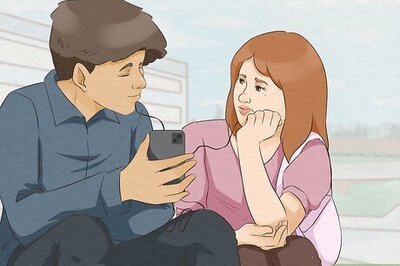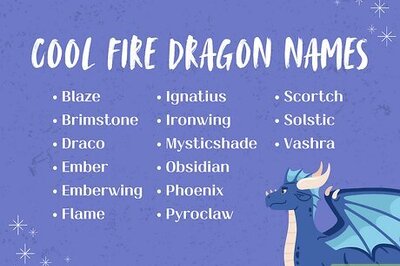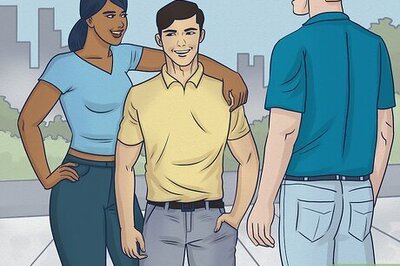
views
We all know that handwashing is an essential habit for preventing the spread of germs and diseases. For children however, hand washing is where good toilet hygiene starts. There are other aspects of toilet hygiene that must be taught, and if neglected, can not only make the child unhealthy, but also cause problems at school and in social situations. These include habits such as flushing, waste disposal, washing or cleaning oneself, and of course, maintaining a clean toilet at home and outside.
Flushing: Why and How
Flushing the toilet after use is not only a matter of courtesy, but also a matter of health. Flushing removes the waste and the germs that come along with our wastes, reducing the risk of contamination and infection. Flushing also helps to prevent clogging, odours, and stains in the toilet bowl.
To teach children to flush properly, you can use the following tips:
- Explain to them why flushing is important and what can happen if they don’t flush.
- Show them how to close the lid of the toilet bowl, and then press the flush handle firmly. Depending on the flush system, some flush handles need to be held down, so show them how to listen for the water flow, and hold the handle down till it does.
- Remind them to flush every time they use the toilet, even if they only urinate.
- Praise them when they flush correctly and gently correct them when they forget or do it wrong.
- If the toilet has a dual flush system, teach them how to use it according to the type of waste they produce – small flush for urine, and big flush for stool.
Waste Disposal: What and Where
Waste Disposal includes not only their bodily waste, but also any items they may use in the toilet, such as toilet paper, wipes, sanitary pads, tampons, diapers, etc.
To teach children how to dispose of their waste properly, you can use the following tips:
- Explain to them what items can be flushed and what items cannot. Generally, only toilet paper and human waste can be flushed, while everything else should be thrown in the trash bin.
- Show them where the trash bin is located and how to open and close it.
- Remind them to wrap their disposables in toilet paper or a plastic bag before throwing it in the trash bin, especially if it is wet or bloody.
- Praise them when they dispose of their waste correctly and gently correct them when they forget or do it wrong.
- If the trash bin is full or missing, teach them how to find another one or ask for help from an adult.
Toilet Cleanliness: When and How
The last aspect of toilet hygiene that children need to learn is how to keep themselves and their surroundings clean when using the toilet. This includes washing their hands, wiping their bottoms, cleaning up any spills or messes, and avoiding contact with dirty surfaces.
To teach children how to keep themselves and their surroundings clean when using the toilet, you can use the following tips:
- Explain to them why cleanliness is important and what can happen if they are not clean.
- Show them how to wash their hands with soap and water for at least 20 seconds, scrubbing all parts of their hands, including their palms, backs, fingers, nails, and wrists.
- Show them how to wipe their bottoms with toilet paper or wipes from front to back, using enough paper or wipes to remove all traces of waste.
- Show them how to clean up any spills or messes they may cause in the toilet with toilet paper or wipes, and throw them in the trash bin.
- Remind them to avoid touching any dirty surfaces in the toilet, such as the seat, the handle, the door knob, etc., and use a tissue or a paper towel to cover the seat if necessary.
- Praise them when they keep themselves and their surroundings clean and gently correct them when they forget or do it wrong.
Creating a Culture of Good Toilet Hygiene
While children learn toilet hygiene at home, it is important that it be reiterated in school as well. After all, it only takes one child who doesn’t know how to use the toilet correctly to create a messy toilet, and worse, spread infections at school. When every child is on the same page, and understands the need to keep the toilet clean for themselves and their friends, is how we build a culture of good toilet hygiene.
Harpic, India’s leading brand in the lavatory care segment, recognises this and has directed several outreach programs towards schools and school children. Harpic has also partnered with News18 in the Mission Swachhta aur Paani Initiative, which has, for 3 years now, championed the cause of inclusive sanitation, equality for all genders, abilities, castes and classes and the strong belief that clean toilets are a shared responsibility.
Under the aegis of Mission Swachhta aur Paani, Harpic partnered with Sesame Workshop India, an educational non-profit working for the early developmental needs of young children, to promote positive sanitation, hygiene knowledge and behaviours among children and families through schools and communities, engaging with 17.5 million children across India.
Mission Swachhta aur Paani also serves as a valuable repository of information on nearly every topic on toilets and sanitation. As a parent, you have the option to champion toilet hygiene education in schools, and Mission Swachhta aur Paani has all the information you need to do so with confidence.
Join us here, to help further the aims of the Swachh Bharat Mission by enabling the behaviour change we need at a societal level. Help us build a Swasth Bharat, by way of a Swachh Bharat.


















Comments
0 comment